
The Flower Flower Bouquet, Parts, Functions, Classification of Flowers
Petals. Usually, petals are the most prominent part of a flower structure, owing to their vivid color (in most flower examples) and sometimes scent. Their main function is to attract pollinators and also protect the inner reproductive structures of a flower. In some flowers, petals are absent or reduced. The whorl of petals is called a corolla.
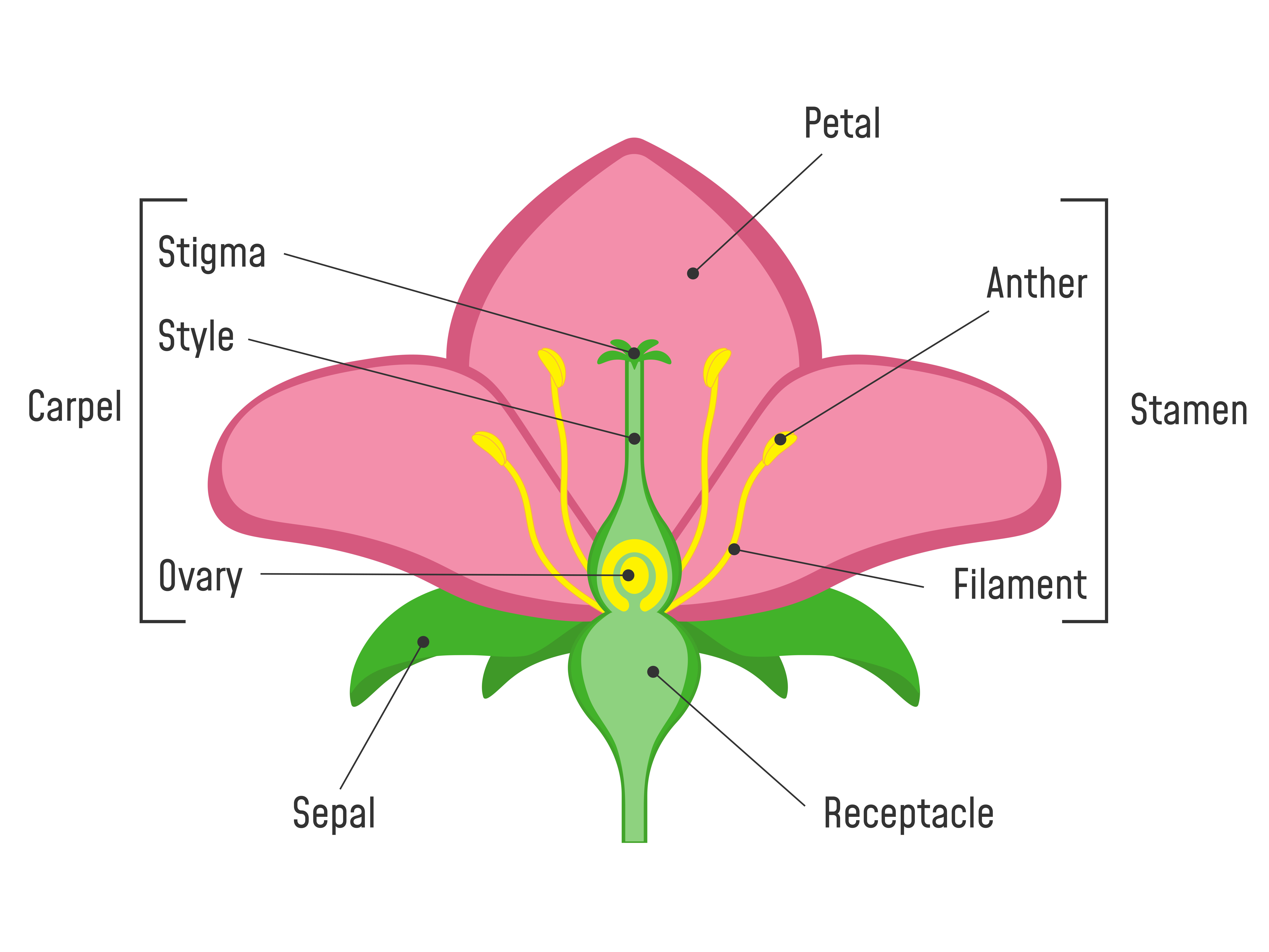
Biology Parts Of A Flower Level 1 activity for kids PrimaryLeap.co.uk
Parts Of A Flower. The sepals, petals, stamens, and carpels are the most important components of a flower. Complete flowers are those that have all four of these components. The male components are stamens, while the female components are carpels. Male and female components are present in most flowers. You'll discover what the fundamental.

Parts of a Flower
In some plants, such as poppy, magnolia, tulip, and petunia, each flower is relatively large and showy and is produced singly, while in other plants, such as aster, snapdragon, and lilac, the individual flowers may be very small and are borne in a distinctive cluster known as an inflorescence.

The Longitudinal Section of Flower An Overview at BYJU’S
Few flowers can produce diaspores without fertilisation. The parts of a flower can be classified into two types; vegetative and reproductive. Apart from this, there are four whorls that are important and responsible for the arrangement of plants such as calyx, corolla, androecium and gynoecium.
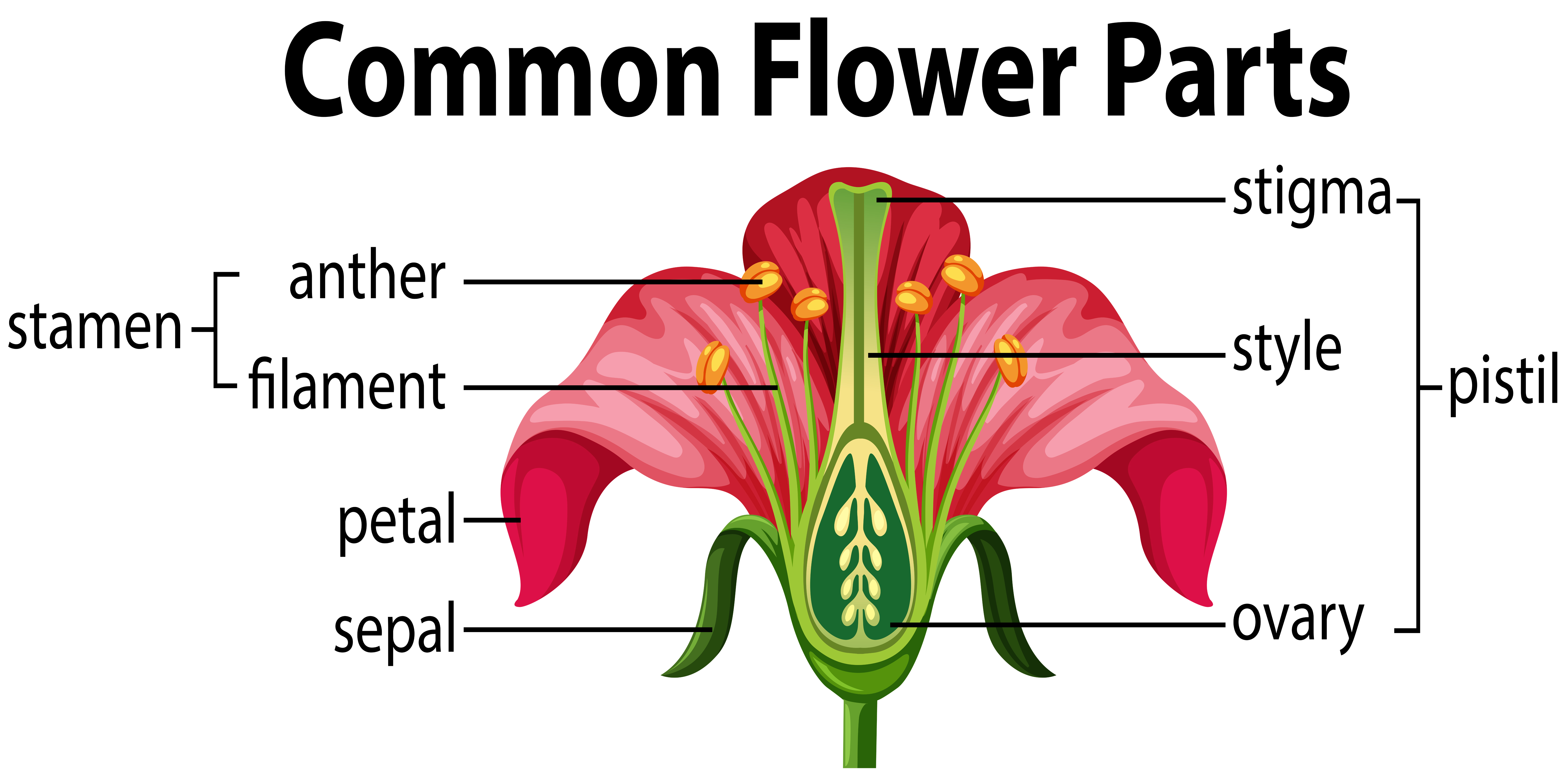
Parts Of A Flower And Their Functions Diagram Best Flower Site
Parts Of A Flower Diagram The diagram below shows the parts of a typical flower. Use the page index, below, to find out what each flower part does. Notes: Some flowers lack one or more of the four main parts (petals, sepals, stamens and carpels). Flowers such as these are known as incomplete flowers.
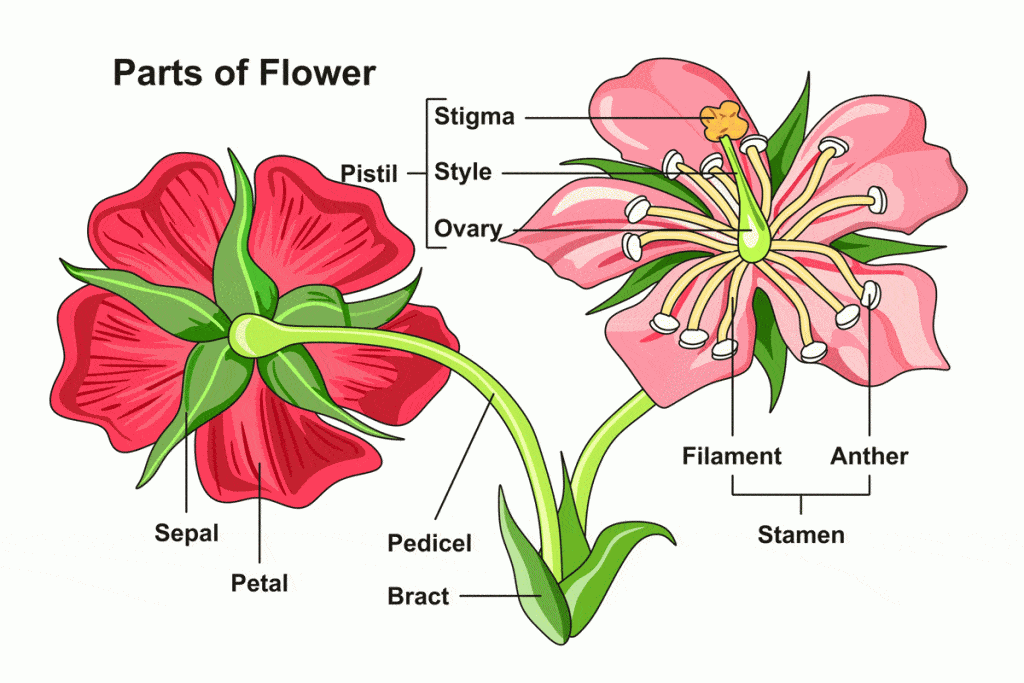
What Are The Parts Of A Rose Plant?
1. Parts of a Flower Flowers are the parts that have the reproductive parts of a tree. The flower ensures that pollination occurs and the species of the tree survives. As for pollination, many trees depend on pollinators like birds and butterflies. They have flowers with a sweet smell and bright colors.
Flower structure diagram / RHS Campaign for School Gardening
Parts of a Flower Diagram. A flower diagram typically consists of several key parts. At the center of a flower is a pistil (female part of a flower), which includes the stigma, the style, and the ovary. Surrounding the pistil are the stamens (the male part of a flower), each comprises of an anther and a filament. The petals, often colorful.
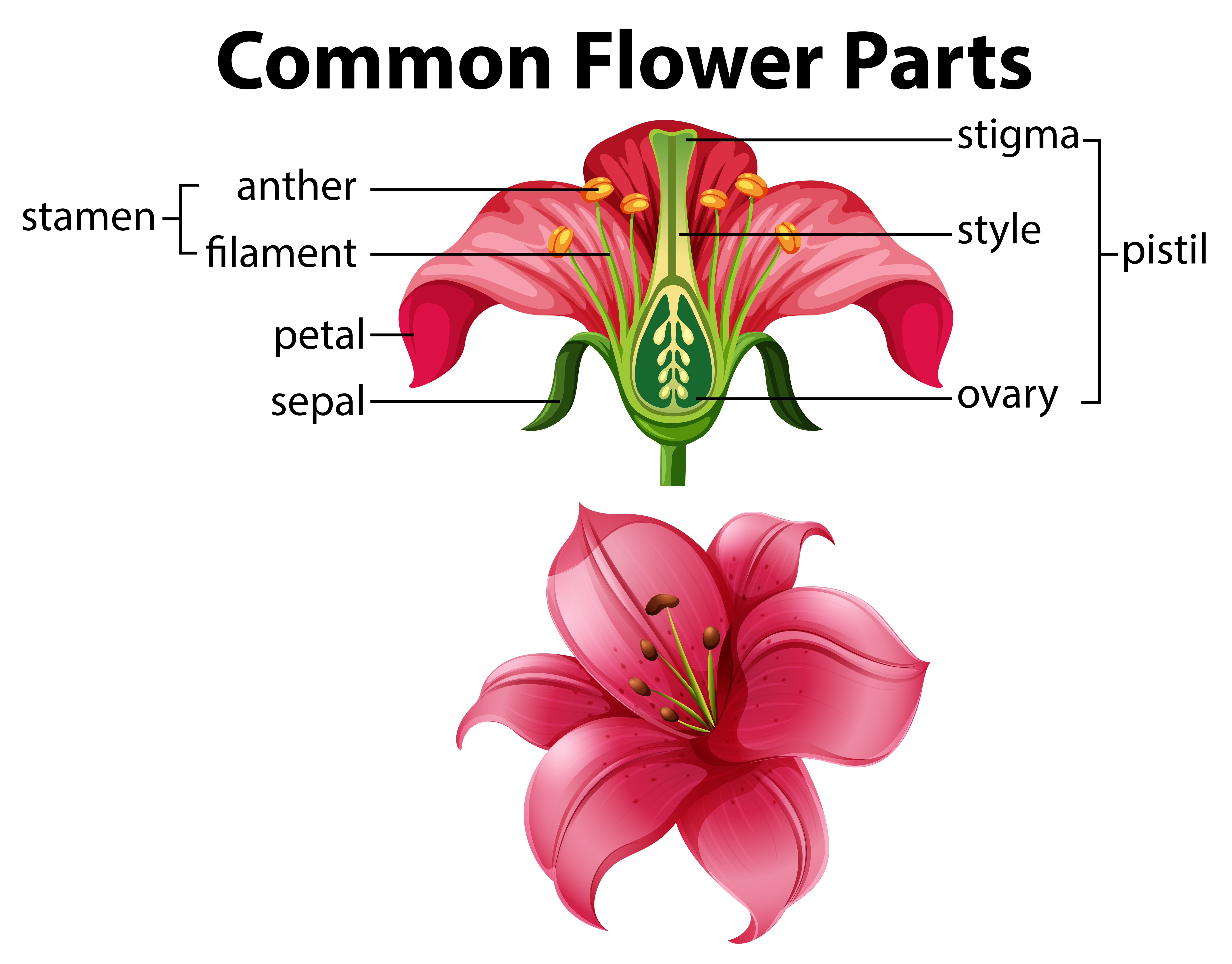
Science of Common Flower Parts 302683 Vector Art at Vecteezy
Printable Flower Diagrams. Using printable diagrams is a great way to teach and become familiar with all the parts of a flower. To download either the labeled diagram above or unlabeled printable diagram below, click on either the diagram itself or the caption. It will open using Adobe Reader. From here you will be able to either save the.

Parts of a Flower and Plant and Their Functions (8 Diagrams Flower
Parts of a Flower and Their Functions (With Diagram) by Trees.com Staff - last update on March 13, 2023, 8:00 pm Table of Contents Complete vs. Incomplete Perfect vs. Imperfect The sole purpose of flowers is sexual reproduction, therefore ensuring the survival of the species.
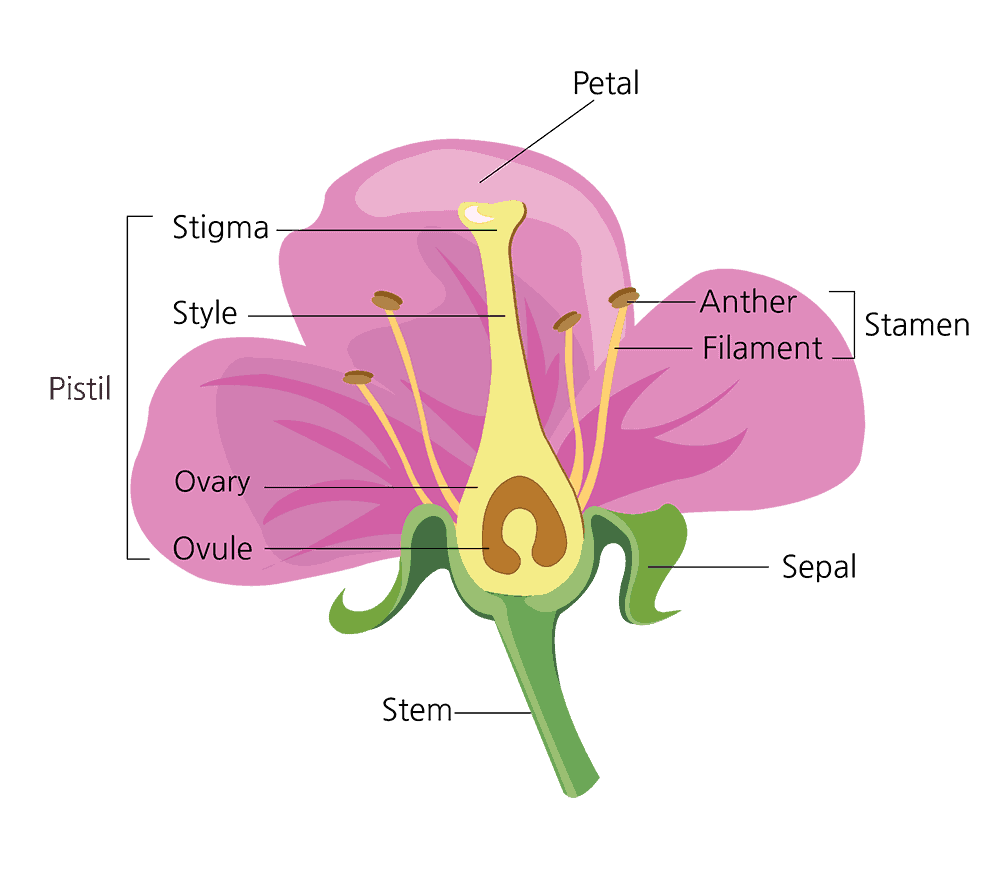
Parts of a Flower and Their Functions (With Diagram)
Nature Plants & Mushrooms Diagram of the Parts of a Flower ••• Updated March 31, 2019 By Julie Bawden-Davis In addition to being beautiful, flowers have the important job of creating seeds. Just about all fruits and vegetables come from seeds. For instance, peach trees bloom in spring with flowers. Those blooms eventually turn into peaches.
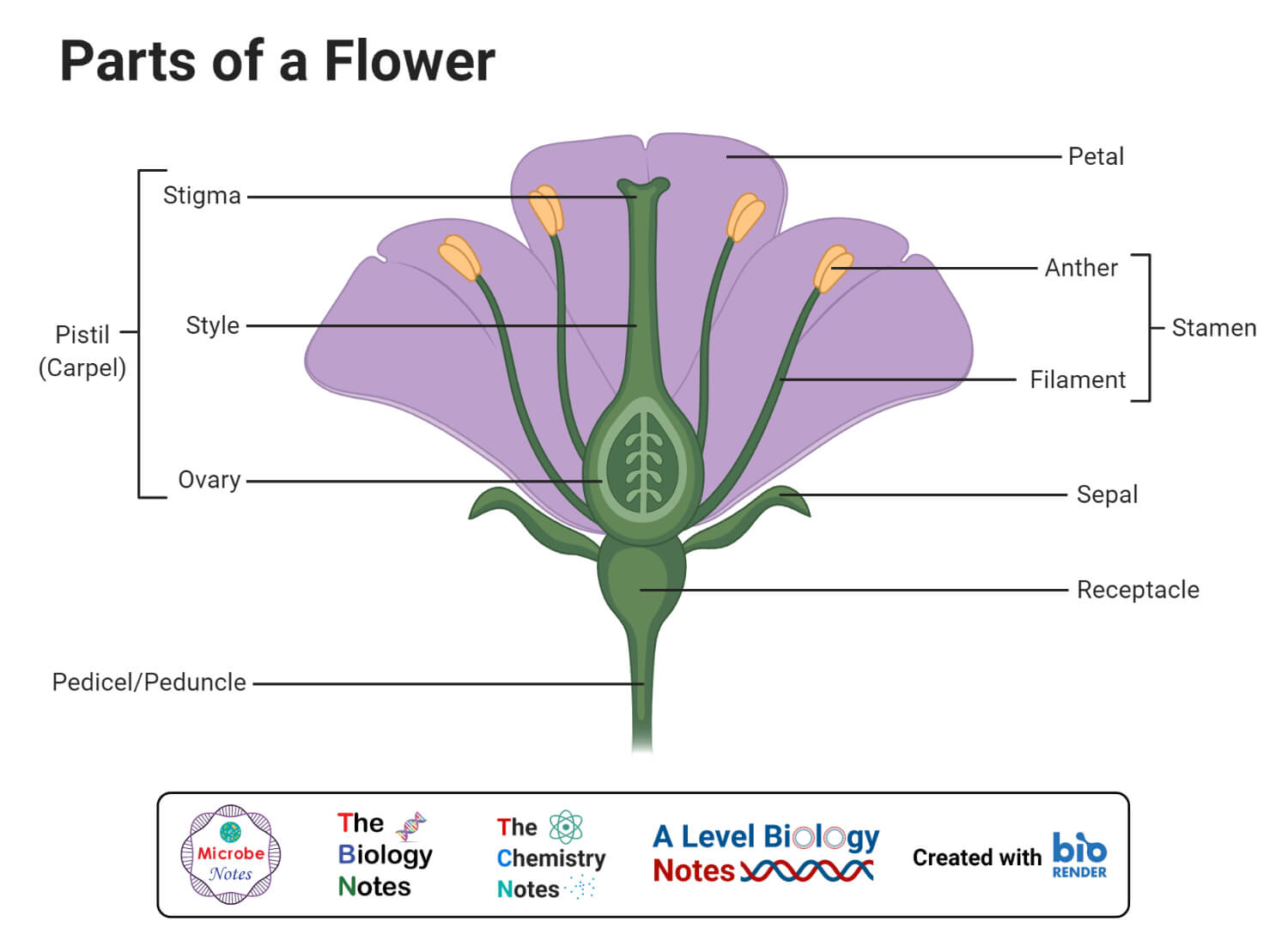
Monocot vs Dicot Flower Definition, Structure, 6 Differences, Examples
Parts of a Flower (Flower Anatomy) Including a Flower Diagram Flowers are the parts of plants that give them beauty, scent, and they function as the plant's reproductive system. Flowers attach to the plant via the stalk. The Structure and Functions of Flowers A flower has female and male parts. The male part of a flower is the stamen.

The Life Cycle Of A Flower Discover How Flowering Plants Reproduce
Anther: The part of the stamen where pollen is produced. Pistil: The ovule producing part of a flower. The ovary often supports a long style, topped by a stigma. The mature ovary is a fruit, and the mature ovule is a seed. Stigma: The part of the pistil where pollen germinates.
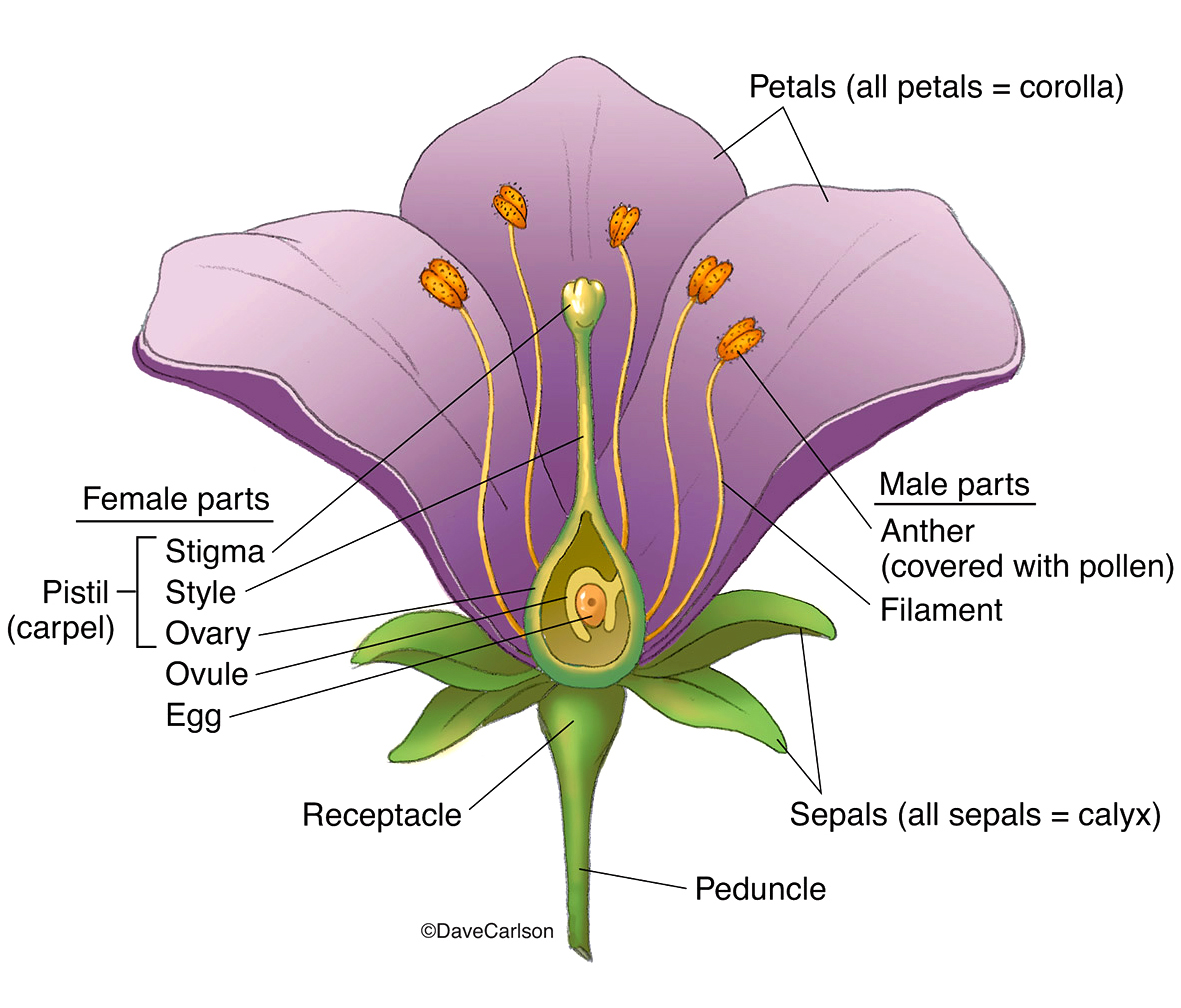
Generalized Flower Structure Carlson Stock Art
Overview A typical flower has four main parts or whorls referred to as the calyx, corolla, androecium, and gynoecium. The outermost whorl of the flower has green, leafy structures known as sepals. The sepals, collectively called the calyx, help to protect the unopened bud.
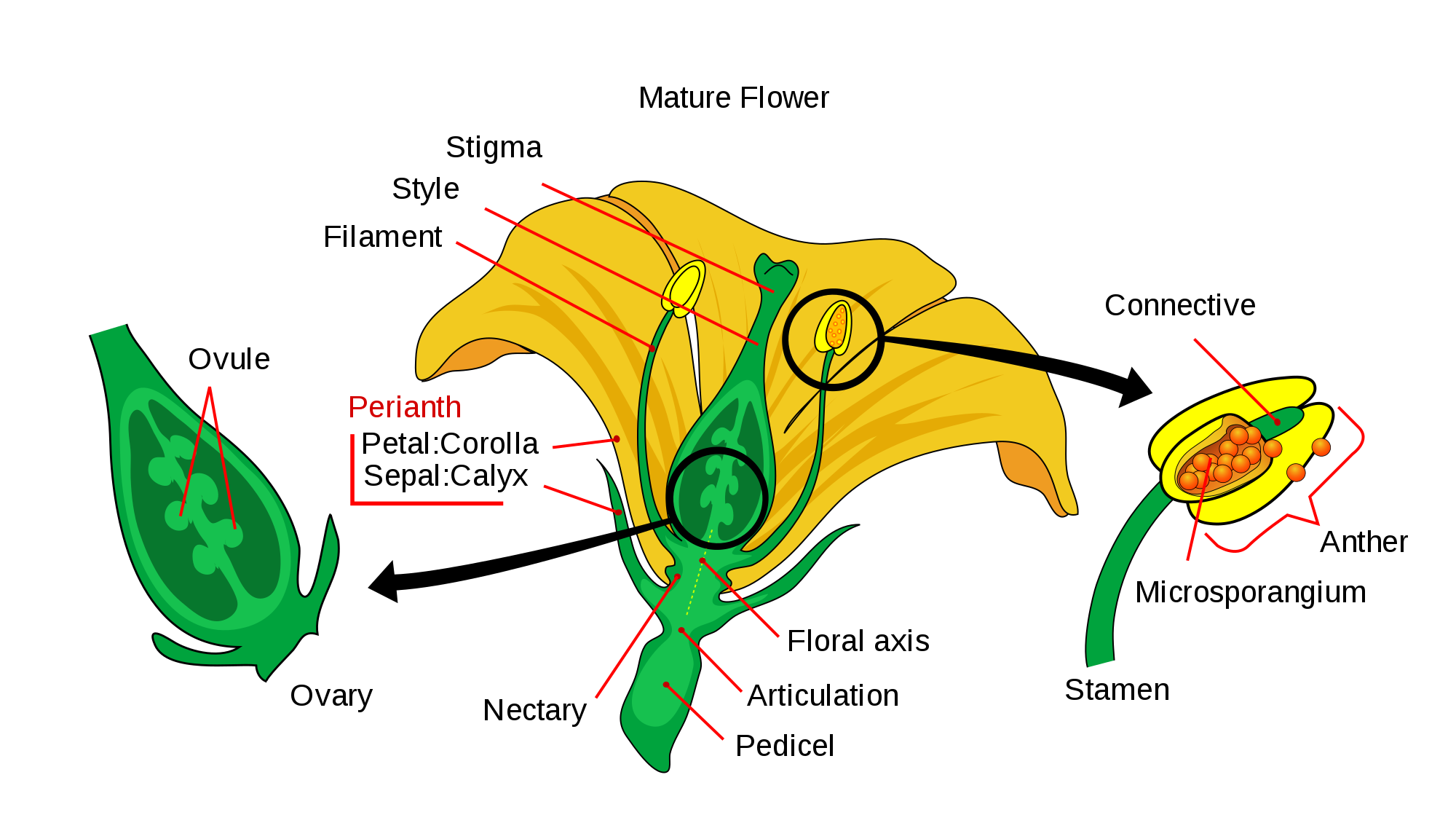
A typical flower and its parts Online Science Notes
A typical diagram of a flower is divided into four main parts: 1) sepals, 2) petals, 3) stamen and, 4) carpel, each of them performing distinct functions. When a flower has all the four floral parts, it is called a complete flower. A flower missing any one of them is called an incomplete flower. Parts of a Flower Diagram. 1. Sepals.

Flower Structure Biology for Majors II
Use our printable labeled parts of a flower diagram (free download below) to learn the basic flower parts. Students can see the different parts of a flower, discuss what each part does, and color those parts in. Then read on to find out how you can set up your own easy flower dissection lab to examine and name the parts of a real flower. Petals.
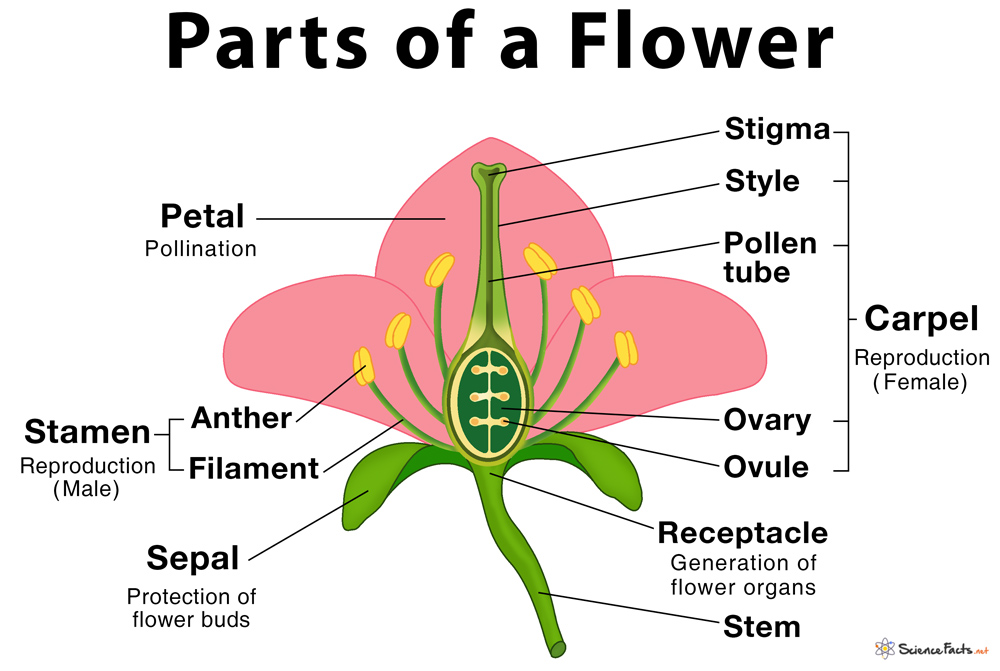
Parts of a Flower, Their Structure and Functions With Diagram
Figure \(\PageIndex{1}\): This diagram shows a long section through a flower. Starting from the bottom, there is a stem called the peduncle. The peduncle terminates in a region called the receptacle, where all of the parts of the flower are attached. Sepals are found on the outside of the flower, two are visible here, with petals located just.